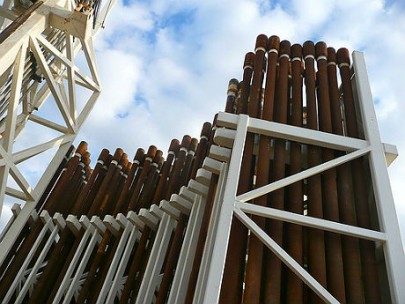Gas boom slows in analysts' eyes
 There are claims this week that Japan's Inpex Corporation is struggling to keep the $A43.5 billion Ichthys LNG project on schedule due to delays with the South Korean shipyard manufacturing the massive offshore platform.
There are claims this week that Japan's Inpex Corporation is struggling to keep the $A43.5 billion Ichthys LNG project on schedule due to delays with the South Korean shipyard manufacturing the massive offshore platform.
The problems is just the latest new risk in plans to fire up $US180 billion worth of LNG projects in Australia in coming years.
Energy consultants Wood Mackenzie say there will be delays not only at Ichthys, but at Chevron's Wheatstone LNG project in WA, and likely slow progress at the over-budget $US54 billion Gorgon project.
If all of these predictions play out, it would see an 11-million-tonne reduction in Australia’s 2015-19 LNG output than was forecast six months ago.
Back at Ichthys, an incredible 120,000-tonne offshore platform is due to set sail for Australia in from the Samsung Heavy Industries shipyard South Korea in 2016.
But the yard is weighed-down with other major construction projects, such as Royal Dutch Shell's giant floating Prelude LNG vessel, which is also heading for a site off the WA coast.
Inpex is playing down the delay.
“Projects the size, scale and scope of the Ichthys LNG Project are complex and challenging,” Inpex chief executive Toshiaki Kitamura told investors earlier this month.
“Various types of work are being conducted simultaneously to develop Ichthys. There are some areas of the project where progress is somewhat ahead or behind, but we are continuing to work diligently towards the target of commencing production by the end of 2016.”
Wood Mackenzie cannot see Ichthys starting production until mid-2017.
The analysts say it will be slowed down by its own complexity, with big challenges in bringing together the two huge offshore structures, a 900-kilometre subsea pipeline, and the two-train LNG plant being built in Darwin.
In fact they predict sluggishness across Australia’s burgeoning LNG scene.
Wood Mackenzie believes Wheatstone is running late after costly site preparation issues, Gorgon has been delayed and will only be able to start its trains nine months apart, and points out that only one of the six LNG trains at Gladstone's Curtis Island has so far begun production.
Meanwhile analysts from a number of respected firms have been surprised at Woodside's decision to leap into construction of the Browse floating LNG venture.
Deutsche Bank estimates the oil prices would need to be at least $US80 a barrel for the Browse venture to be viable, a level it does not expect for at least two years.
Macquarie Private Wealth said even prices of $US78 a barrel, would see Browse deliver a rate of return of only 10.3 per cent, and take 10 years to pay back.
Woodside's pledge for returns of 12 per cent took quite a few observers by surprise.
“It will be interesting to see how they look to potentially re-engineer or rephase that so that it becomes a more capital-efficient or more attractive project,” Wood Mackenzie Asia-Pacific principal upstream analyst Angus Rodger said.
“Browse, to actually make it to FID [final investment decision], has to be an extremely competitive project from a global economic perspective.”








 Print
Print